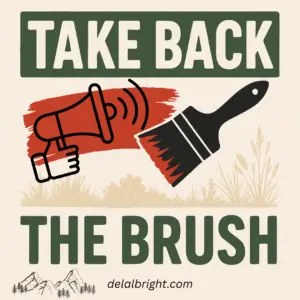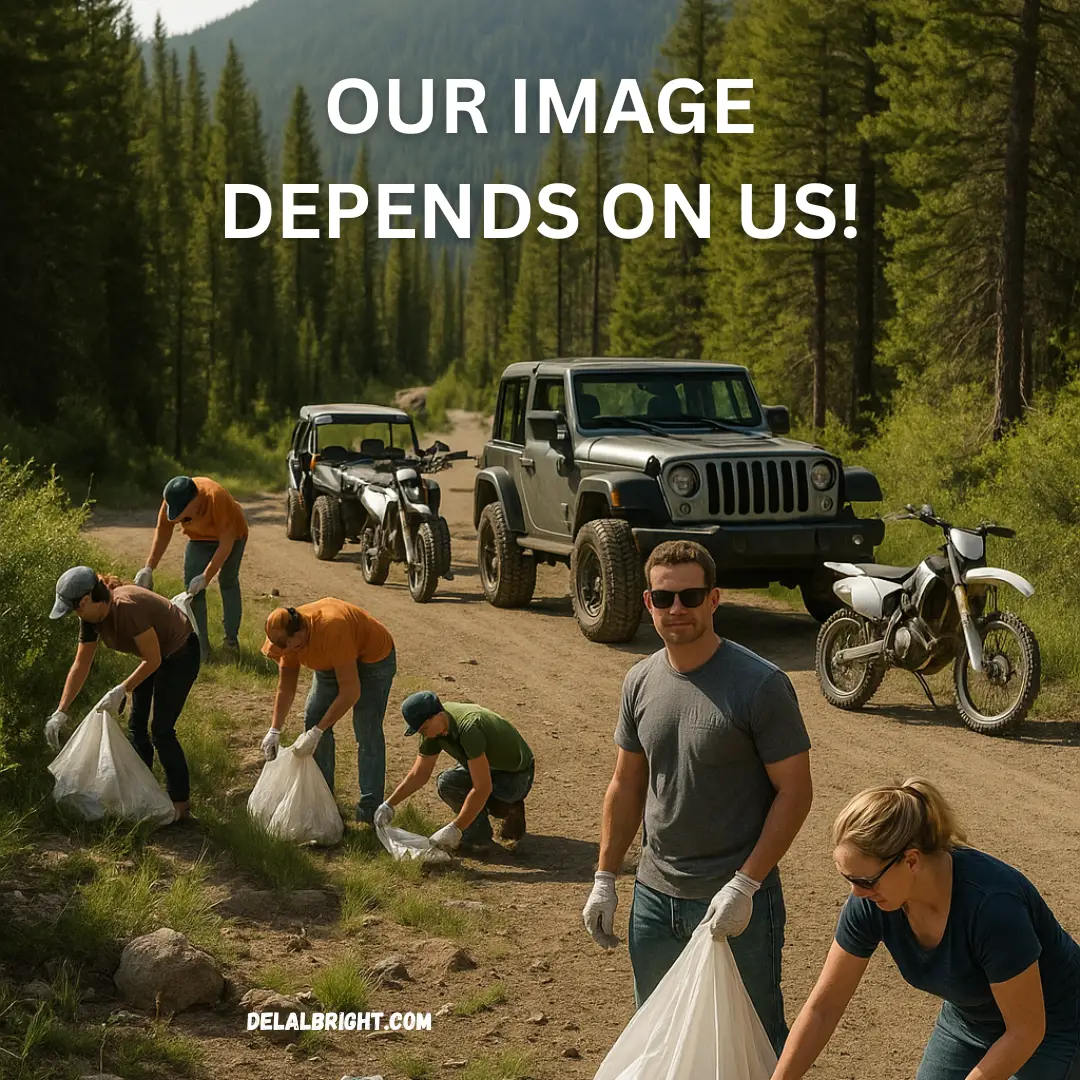Take Back the Brush: Protecting the Image of Recreationists
Controlling the Narrative About our Image
by Del Albright, Sustainable Motorized Recreation Advocate
It’s All About Image
It’s all about image! That’s why I say it’s time to take back the brush. For too long, others have been painting the picture of who we are as recreationists—and the result hasn’t been pretty. Have you ever noticed how the media always seems to have a steady supply of bad press about multiple-use on public lands? It makes me wonder how much money the anti-access crowd pours into shaping their image—and how much of that effort is aimed at tainting ours.
Time and again, I see trash along highways and backcountry roads that somehow gets pinned on OHV users. The irony? In my experience, responsible motorized recreationists often care more—and do more—to clean up, maintain, and improve our trails than many of the so-called environmentalists pointing fingers. Yet the narrative isn’t ours. Someone else is holding the brush, painting our image—and I, for one, don’t like the picture they’re creating.
Take Back the Brush: Control the Narrative
Our image is as important as our reputation, credibility, and integrity. We go to extremes to protect those things—why not protect our image the same way? Right now, anti-access voices are using their brush to paint us as abusers of the land. But responsible recreation and multiple-use are not abuse. It’s time to reclaim the canvas and control the narrative ourselves.

The Battle for Public Perception
Politicians and decision-makers are never short on photos, reports, or “studies” that show a one-sided view of multiple-use. Anti-access groups seem to have a steady supply of material ready to paint recreationists and other land users as reckless or destructive.
Targeted activities include:
-
Driving on beaches once open for public access (Black Sands Beach, CA)
-
Logging (across the U.S.)
-
Mining (Utah and other western states)
-
Controlled burning (Los Alamos, NM and many other areas)
-
Snowmobiling (Yellowstone)
-
Four-wheeling (nearly everywhere, USA)
- Sand Duning (Glamis, Oceano, etc.)
Recreationists are portrayed in a bad light, and the narrative convinces a large segment of urban voters that “using” our public lands is the same as “abusing” them. They see our image as tainted – on purpose. But here’s the truth: perception becomes reality. If we don’t take charge of our image, someone else will.
Our Image is Our Reputation
Think of your image the same way you think of your reputation, credibility, and integrity. Most of us would go to extremes to protect our honor. Why should our image be any different?
Our image is who we are to most people. If we let others control that perception, we risk losing not just our credibility—but access to the very lands we love.
It’s time to take control. Here’s how.
Five (Plus One) Steps to Protect and Enhance Our Image
1. Self-Policing
Don’t let rule-breaking slide. If someone is tearing up a trail, driving off-limits, or ignoring restrictions—stop them. Correct it on the spot. When we fail to self-police, we give our opponents the ammo they crave. I do not suggest or want you to get into a ugly confrontation or jeopardize your safety, but if words can make the difference, use them. Motorized outlaws and serious violations should be reported to the nearest law enforcement officer/office. Make sure you can identify the driver/violator and the vehicle.
2. Education
Share your knowledge of responsible land use. Teach others, especially newcomers. And if you don’t know enough yourself, invest the time to learn. The better informed you are, the stronger you’ll be when you speak up for our recreation.
3. Invest in Our Image
Clubs, organizations, and individuals need to put real money into building and promoting a positive image. That means brochures, handouts, booths at events, professional consultants, and even sponsoring representatives at key gatherings. If the other side is investing in messaging, we must as well. It takes an effort (and investment) to take control of the narrative.
4. Be Proactive
Too often, we wait until we’re under attack before acting. Instead, let’s think outside the box and create image-building campaigns before problems arise. Work with manufacturers, advertisers, and influencers to showcase responsible recreation in a positive light. Get ahead of the curve. Promote and reward (and recognize) responsible recreation.
5. Unite and Band Together
Strength comes in numbers. By uniting across all forms of multiple-use—off-roaders, loggers, miners, ranchers, hunters, snowmobilers, and more—we can pool resources, share budgets, and present a stronger, united front especially when it comes to investing in a better narrative (publicity).
Time to Take Back the Brush
My honor, integrity, and reputation are on the line when someone paints my image as “bad.” And I’ll bet yours are too.
We cannot allow anti-access voices to keep defining who we are and what we stand for. They’ve controlled the narrative for too long, twisting perception into a false reality. It’s time we took back the brush, reshaped the story, and showed the world the truth: responsible recreation and multiple-use are not abuse. Let’s promote ourselves and the good work we do!
Because in the end, perception becomes reality. The choice is clear—either we control the narrative and tell our story with pride, or we let someone else keep portraying us as something we’re not.
What are your ideas for improving the image of recreationists? Share your thoughts in the comments below and let’s keep building a stronger, united voice for access.
More on landuse, volunteerism, and leadership in my book on Amazon.

